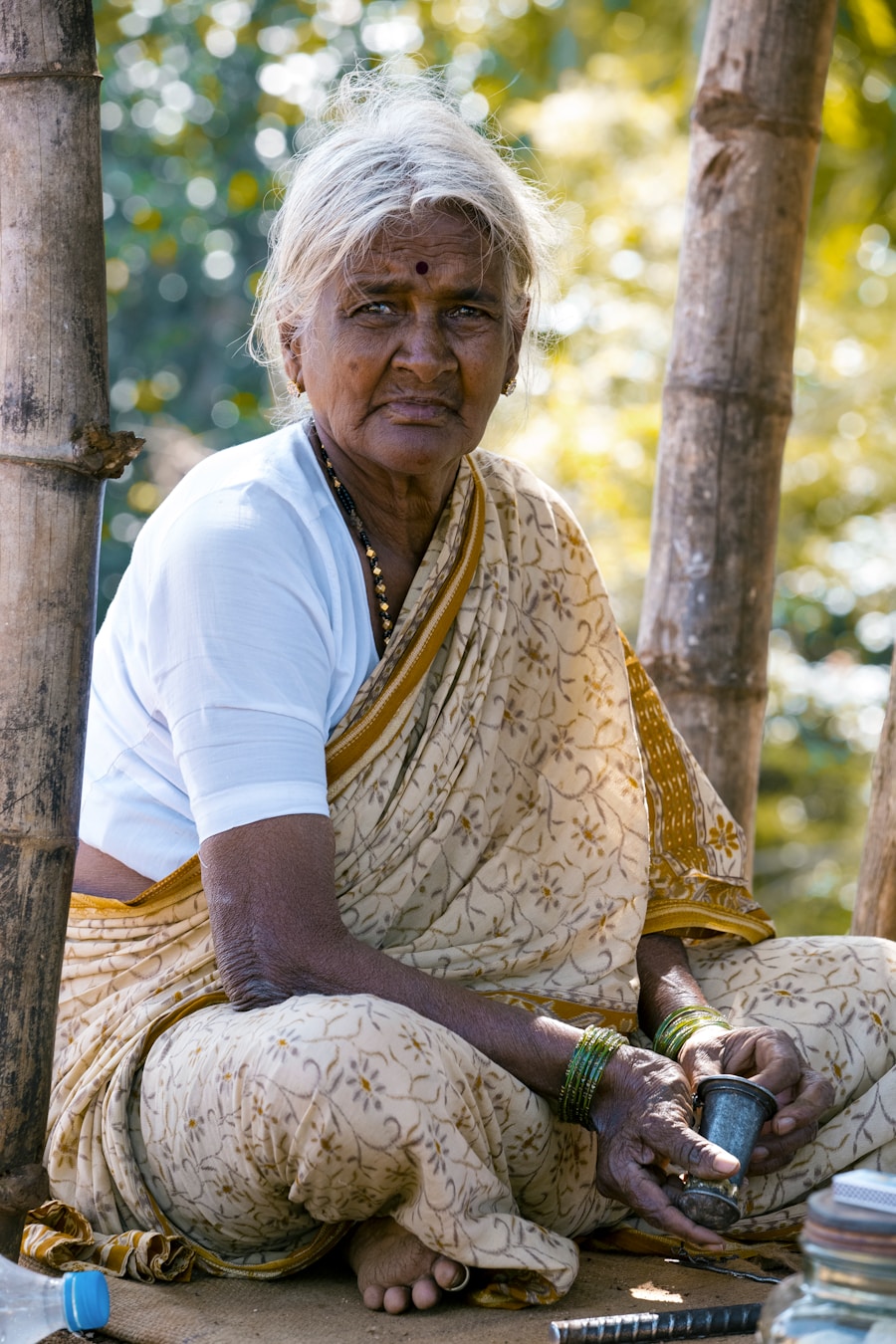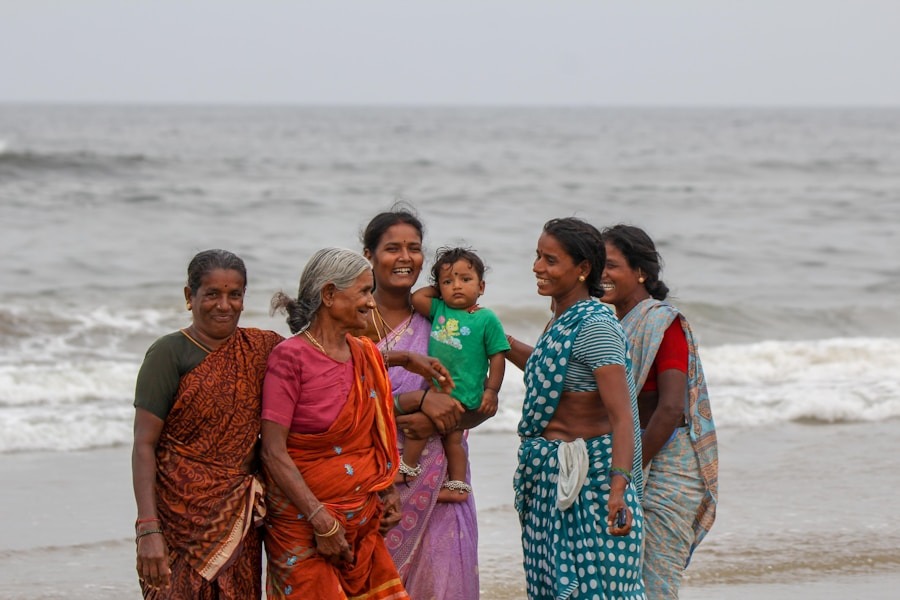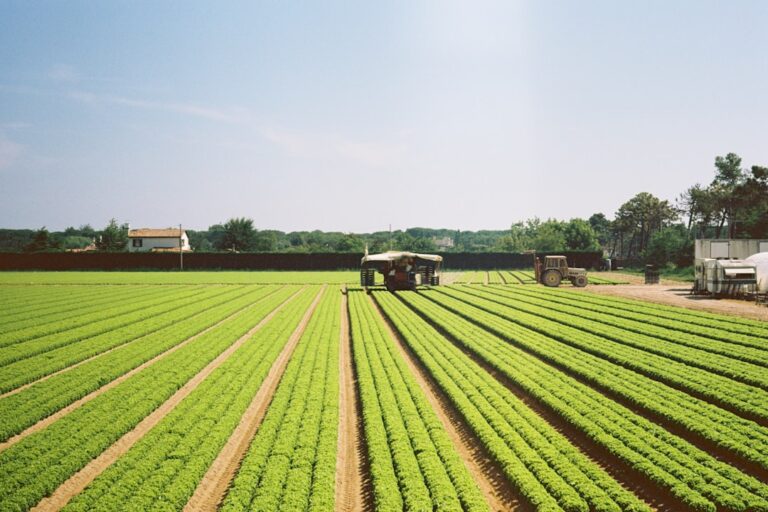The environmental movement in India has been significantly shaped by the contributions of women, who have often been at the forefront of grassroots activism. Historically, women have played a crucial role in advocating for environmental justice, particularly in rural areas where their livelihoods are closely tied to natural resources. The Chipko Movement of the 1970s serves as a seminal example, where women in the Himalayan region embraced trees to prevent deforestation.
This act of resistance not only highlighted the importance of forests for local communities but also underscored women’s unique relationship with nature. Their involvement was not merely a reaction to environmental degradation; it was a proactive stance that emphasized the need for sustainable practices and conservation. Women in India have also been instrumental in raising awareness about environmental issues at various levels, from local communities to national platforms.
Organizations such as the Self-Employed Women’s Association (SEWA) have empowered women to engage in environmental advocacy, linking their economic activities with ecological sustainability. By organizing women workers, SEWA has facilitated discussions on issues like waste management and pollution, enabling women to become agents of change in their communities. This grassroots mobilization has led to a broader recognition of women’s roles in environmental stewardship, challenging traditional gender norms and advocating for policies that support sustainable development.
Key Takeaways
- Women have played a significant role in India’s environmental movement, advocating for sustainable practices and conservation efforts.
- Women possess traditional knowledge and ecological practices that have been crucial in preserving the environment and natural resources.
- Women face various challenges in environmental conservation, including limited access to resources, gender-based discrimination, and lack of representation in decision-making processes.
- There are numerous success stories of women-led environmental initiatives, showcasing the impact of women’s leadership in driving positive change.
- Empowering women is essential for sustainable development, as they are key agents of change in environmental protection and conservation efforts. Gender equality is crucial for achieving effective and inclusive environmental protection.
Women’s Traditional Knowledge and Ecological Practices
Women in India possess a wealth of traditional knowledge that is deeply intertwined with ecological practices. This knowledge, often passed down through generations, encompasses sustainable agricultural techniques, medicinal plant usage, and water conservation methods. For instance, in many tribal communities, women are the primary custodians of indigenous seeds, which are crucial for maintaining biodiversity and food security.
Their understanding of local ecosystems allows them to cultivate crops that are resilient to climate change, thereby ensuring the sustainability of their communities. Moreover, women’s roles in managing water resources are critical in regions facing water scarcity. In Rajasthan, for example, women have been pivotal in reviving traditional rainwater harvesting systems known as “johads.” These structures not only enhance groundwater recharge but also empower women by reducing their time spent fetching water from distant sources.
By integrating traditional ecological knowledge with modern conservation practices, women contribute significantly to environmental sustainability while also enhancing their own socio-economic status.
Challenges Faced by Women in Environmental Conservation

Despite their vital contributions to environmental conservation, women in India face numerous challenges that hinder their effectiveness and recognition in this field. One significant barrier is the pervasive gender inequality that exists across various sectors. Women often lack access to resources such as land, credit, and education, which limits their ability to engage fully in environmental initiatives.
In many rural areas, cultural norms dictate that men are the primary decision-makers regarding land use and resource management, sidelining women’s voices and perspectives. Additionally, women activists frequently encounter threats and violence when they challenge powerful interests that exploit natural resources. The case of Medha Patkar, a prominent environmental activist involved in the Narmada Bachao Andolan, illustrates the risks faced by women who stand up against large-scale development projects.
Such challenges not only deter individual women from participating in environmental movements but also create an atmosphere of fear that stifles collective action. The lack of legal protection for women activists further exacerbates these issues, making it imperative to address both gender-based violence and systemic inequalities within the environmental sector.
Success Stories of Women-led Environmental Initiatives
Numerous success stories highlight the transformative impact of women-led environmental initiatives across India. One notable example is the work of Wangari Maathai’s Green Belt Movement, which inspired Indian women to engage in tree planting and reforestation efforts. In states like Uttarakhand and Himachal Pradesh, local women’s groups have taken the initiative to plant thousands of trees, restoring degraded landscapes while simultaneously improving their communities’ livelihoods through eco-tourism and sustainable agriculture.
Another inspiring case is the work of the Barefoot College in Rajasthan, which trains rural women as solar engineers. This initiative not only empowers women with technical skills but also promotes renewable energy solutions in off-grid villages. By harnessing solar energy, these women have transformed their communities’ energy access while reducing reliance on fossil fuels.
The success of such initiatives demonstrates how empowering women can lead to innovative solutions for pressing environmental challenges while fostering community resilience.
Empowering Women for Sustainable Development
Empowering women is essential for achieving sustainable development goals (SDGs) in India. When women are given equal opportunities to participate in decision-making processes related to environmental management, they bring unique perspectives that can lead to more effective and inclusive policies. Programs aimed at enhancing women’s access to education and resources can significantly improve their capacity to contribute to sustainable practices.
Furthermore, women’s empowerment can catalyze broader social change within communities. As women gain confidence and leadership skills through participation in environmental initiatives, they often become advocates for other social issues such as health care and education.
This interconnectedness highlights the importance of viewing women’s empowerment not just as an isolated goal but as a fundamental component of holistic sustainable development strategies. By investing in women’s leadership and capacity-building programs, stakeholders can create a ripple effect that benefits entire communities.
The Importance of Gender Equality in Environmental Protection

Gender equality is not merely a matter of social justice; it is a critical factor in effective environmental protection. Research has shown that when women are involved in environmental governance, outcomes tend to be more favorable for both ecosystems and communities. Women’s diverse experiences and knowledge contribute to more comprehensive approaches to resource management and conservation strategies.
For example, studies have indicated that female-led conservation projects often prioritize community needs alongside ecological sustainability, leading to more resilient ecosystems. Moreover, addressing gender inequality can enhance climate change adaptation efforts. Women are disproportionately affected by climate change due to their roles as primary caregivers and resource managers.
By integrating gender considerations into climate policies and programs, governments can ensure that women’s voices are heard and their needs are met. This approach not only strengthens community resilience but also fosters a more equitable society where both men and women can thrive together in harmony with their environment. In conclusion, the role of women in India’s environmental movement is multifaceted and essential for achieving sustainable development goals.
Their traditional knowledge and ecological practices provide invaluable insights into sustainable resource management. However, challenges such as gender inequality and systemic barriers must be addressed to fully harness women’s potential as agents of change. Success stories from various initiatives demonstrate the transformative power of empowering women in environmental conservation efforts.
Ultimately, recognizing the importance of gender equality is crucial for effective environmental protection and sustainable development in India and beyond.
In a related article, Exploring the Basics and Key Figures of Phenomenology: Husserl and Kierkegaard, the philosophical concepts of essence, intentionality, and bracketing are discussed in depth. This article delves into the works of Husserl and Kierkegaard, shedding light on their contributions to the field of phenomenology. Just as Women and Environment: Voices in India’s Ecological Awakening explores the intersection of gender and environmental issues in India, this article delves into the fundamental principles of phenomenology as articulated by key figures in the field.
FAQs
What is the relationship between women and the environment in India?
In India, women have a strong connection to the environment as they are often responsible for natural resource management, agriculture, and household water and energy needs.
How do women in India contribute to environmental conservation?
Women in India contribute to environmental conservation through sustainable farming practices, preservation of traditional knowledge about plants and herbs, and advocating for the protection of natural resources.
What are some challenges faced by women in India in relation to the environment?
Women in India face challenges such as lack of access to land and resources, limited decision-making power in environmental matters, and the impact of climate change on their livelihoods.
How are women in India raising their voices for environmental issues?
Women in India are raising their voices for environmental issues through grassroots movements, advocacy for sustainable development, and participation in policy-making processes at local and national levels.
What are some success stories of women-led environmental initiatives in India?
There are numerous success stories of women-led environmental initiatives in India, including community-based conservation efforts, sustainable agriculture projects, and the promotion of renewable energy technologies.






















+ There are no comments
Add yours